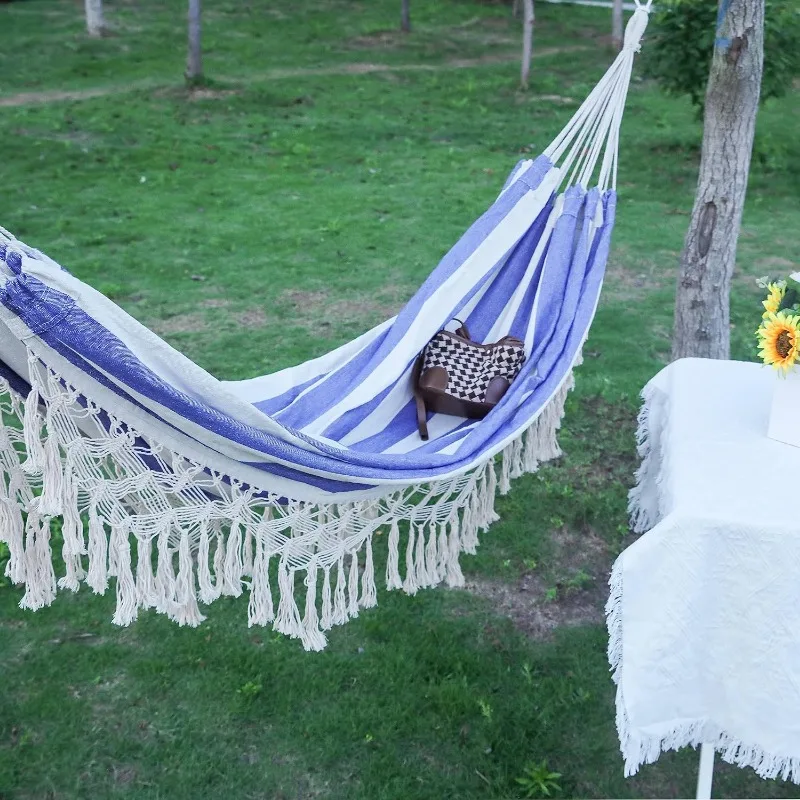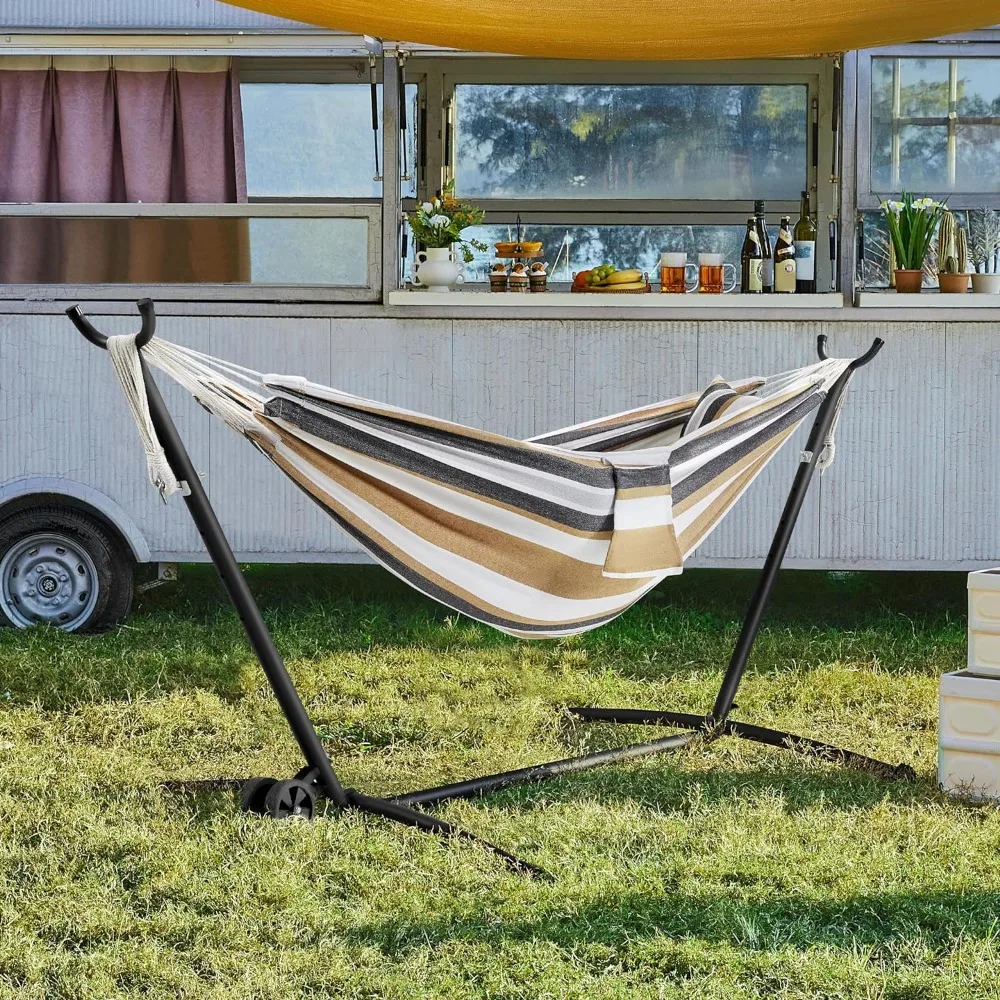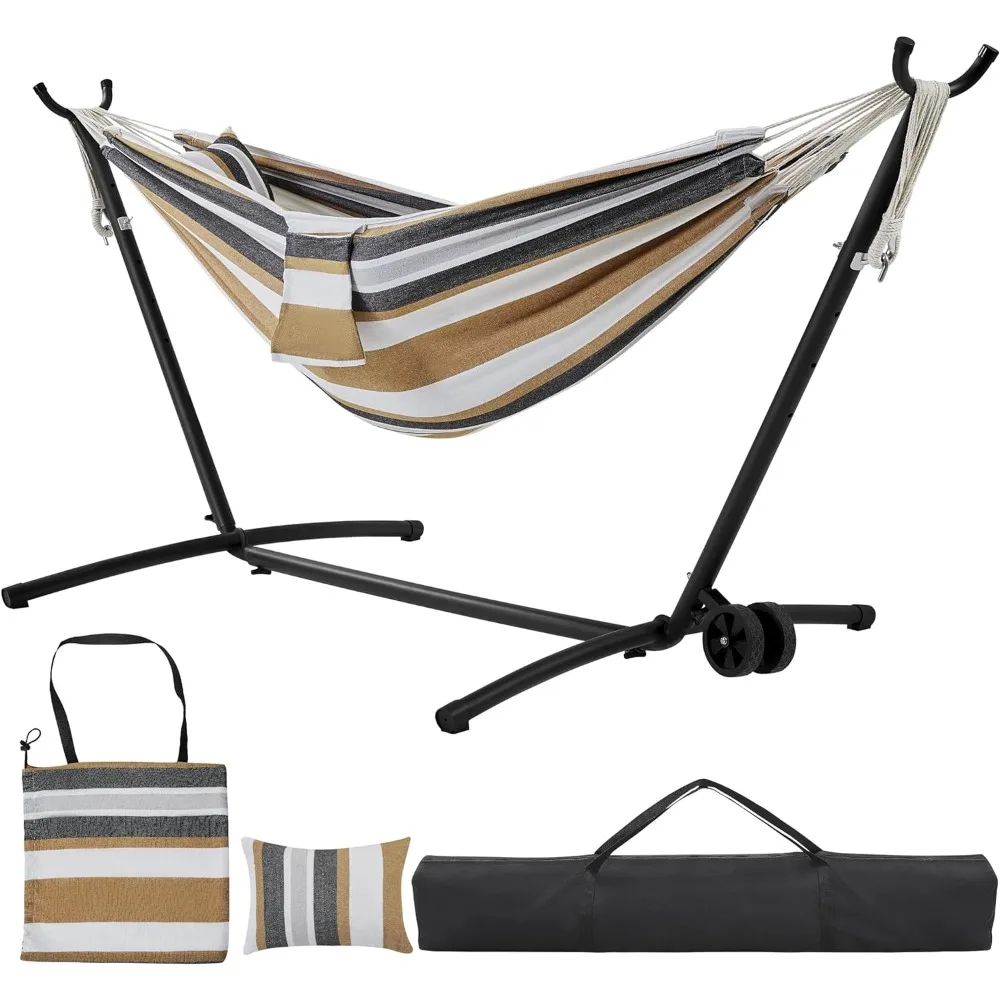Setting Up Your Hammock: Ultimate Relaxation Guide
Hammocks are synonymous with relaxation, offering a unique blend of comfort and tranquility whether you’re in your backyard, camping in the wilderness, or enjoying a beach vacation. Setting up your hammock correctly ensures maximum comfort and safety, allowing you to unwind and rejuvenate effectively. In this comprehensive guide, we’ll explore everything you need to know about setting up your hammock for the ultimate relaxation experience.
Choosing the Right Hammock
Before you can enjoy the perfect relaxation spot, selecting the right hammock is crucial. Hammocks come in various materials, sizes, and designs, each suited for different environments and preferences. Traditional rope hammocks provide a classic look and breathability, while fabric hammocks offer additional comfort with padding or quilting. Consider where you’ll use it most—indoors, outdoors, or for camping—to guide your choice.
Selecting the Ideal Location
Once you have your hammock, choosing the right location is key. For outdoor use, look for sturdy trees or posts approximately 12 to 15 feet apart. Ensure the area is clear of obstacles and at a suitable height to prevent sagging or dragging on the ground. Indoors, you might use wall-mounted hooks or a sturdy hammock stand, which offers flexibility in placement and doesn’t require natural anchor points.

Setting Up Your Hammock Outdoors
For outdoor setup between trees, start by measuring the distance between your chosen anchor points. Use tree-friendly straps or ropes to wrap around the trees, ensuring they are at least 6 feet from the ground for optimal height. Avoid using narrow or young trees that could be damaged by the hammock’s weight. Attach your hammock to the straps or ropes using secure knots like the bowline or trucker’s hitch for stability.
Installing Your Hammock Indoors
Indoor installation typically involves using wall-mounted hooks, a hammock stand, or a combination of both. For wall hooks, ensure they are anchored into a stud or using reliable drywall anchors rated for the weight capacity of your hammock. Hammock stands are convenient for indoor use as they can be moved around and don’t require permanent installation. Ensure the stand is level and stable before relaxing in your hammock.
Adjusting the Hammock for Comfort
Once your hammock is securely set up, adjust it for maximum comfort. A properly hung hammock should have a slight curve when you lie diagonally, providing ergonomic support and reducing strain on your back. Experiment with different angles and heights until you find the optimal position that feels snug but not too tight. Take your time to fine-tune the setup to your liking before settling in for relaxation.
Adding Accessories for Enhancement
Enhance your hammock experience with accessories like pillows, blankets, or a hammock-specific underquilt for cooler temperatures. Pillows provide neck support, while blankets add warmth on chilly evenings. An underquilt prevents cold drafts from beneath, extending your hammock season into cooler months. Consider a hammock rainfly or canopy for weather protection if you plan to use your hammock in varying conditions.
Maintaining Your Hammock
To prolong the lifespan of your hammock, regular maintenance is essential. Fabric hammocks can be machine-washed on a gentle cycle with mild detergent, while rope hammocks may need spot cleaning and occasional re-tightening of knots. Store your hammock indoors when not in use to protect it from prolonged exposure to sun and rain, which can cause fading and deterioration of materials. Inspect straps, ropes, or hardware for signs of wear and replace as needed to ensure safety.

Exploring Hammock Safety
Safety is paramount when setting up your hammock. Always inspect your chosen anchor points for stability and weight-bearing capacity. Ensure straps or ropes are securely fastened and properly tensioned to prevent unexpected falls or collapses. When using a hammock stand indoors, ensure it is on a level surface and all components are assembled according to manufacturer guidelines. Regularly check hardware and connections for any signs of wear or fatigue that could compromise safety.
Choosing the Perfect Spot
Selecting the ideal spot goes beyond just finding two trees or installing hooks. Consider factors like shade, wind direction, and privacy. A shaded area protects you from direct sunlight during hot days, while a breezy location offers natural ventilation. Privacy is crucial for relaxation, whether you’re in your backyard or a campsite. Choose a spot where you feel comfortable and secluded, allowing you to fully immerse yourself in relaxation without distractions.
Tips for Relaxing in Your Hammock
Once your hammock is set up, take time to unwind and enjoy the experience. Lie diagonally for optimal comfort, allowing your body to naturally curve with the hammock’s shape. Use pillows for added support or elevate your legs with a small stool for improved circulation. Practice deep breathing or meditation techniques to enhance relaxation further. Embrace the gentle sway of the hammock and let go of daily stresses as you enjoy nature’s embrace.
Hammock Activities and Leisure
While hammocks are perfect for relaxation, they also offer a versatile space for activities. Bring along a good book or your favorite music to create a serene atmosphere. Use your hammock for stargazing on clear nights or as a cozy spot for an afternoon nap. Some hammocks even accommodate two people, making them ideal for sharing intimate moments or simply enjoying each other’s company in comfort. Flexibility and adaptability make hammocks a staple for outdoor leisure and relaxation.
Environmental Considerations
Respect the environment when using your hammock outdoors. Avoid damaging tree bark with ropes or straps; instead, opt for tree-friendly suspension systems. Dispose of waste responsibly and leave no trace of your visit, ensuring others can enjoy the natural beauty of the area. Choose eco-friendly materials when purchasing hammocks and accessories to minimize environmental impact. By practicing mindful hammock use, you contribute to preserving outdoor spaces for future generations to enjoy.

Seasonal Considerations
Adjusting your hammock setup according to the seasons can significantly enhance your comfort and enjoyment. In warmer months, opt for lightweight, breathable fabrics that promote airflow and prevent overheating. Consider adding a hammock bug net to keep insects at bay during summer evenings. In colder weather, swap to a hammock with insulation or use an underquilt to retain body heat. Additionally, a hammock rainfly or tarp provides protection from rain and wind, ensuring year-round usability.
Social and Family Benefits
Hammocks are not just for solitary relaxation; they also foster social connections and family bonding. Set up multiple hammocks in a circle or close proximity to encourage conversations and shared experiences. Children love hammocks for play and relaxation, offering a safe and fun environment for them to enjoy outdoor activities. Families can create lasting memories by camping together in hammocks, stargazing, telling stories, or simply enjoying each other’s company in a tranquil outdoor setting.
Conclusion
Setting up your hammock for ultimate relaxation requires attention to detail and proper technique, whether you’re hanging it between trees, mounting it indoors, or using a hammock stand. By choosing the right hammock, selecting an ideal location, and adjusting it for comfort, you create a haven for relaxation wherever you go. Remember to maintain your hammock regularly to ensure it stays in top condition for years of tranquil enjoyment. With these tips, you’re ready to embark on a journey of relaxation and rejuvenation, one hammock setup at a time.
